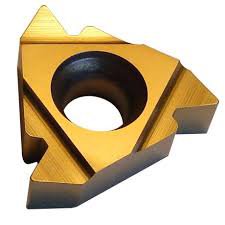- Joined
- Nov 23, 2014
- Messages
- 2,634
Good point on supporting a U.S. company. I work at the GM plant in Lansing, MI; Lansing Grand River where Cadillac CTS, ATS and Chevy Camaros are built. We would appreciate the rest of the country considering our products when they are new car shopping. It is a global economy; our transmissions come from France, wire harnesses from South America, many other parts from Mexico, Canada, China and Korea. Regardless, about 1500 Americans putting them all together.I've been using the Arthur R. Warner HSS tools. I love them. You can re-sharpen the inserts and they work great on mini lathes. The center cutting 60° tool in the 5 piece set specifically states it can be used to cut threads. While expensive compared to the import tools, they are superior. I also enjoy supporting a family owned U.S company. I get mine from LMS, but they are the same price on the A.R. Warner web store.
Just my uninformed non-real machinist opinion of course.
Roy
Bruce

